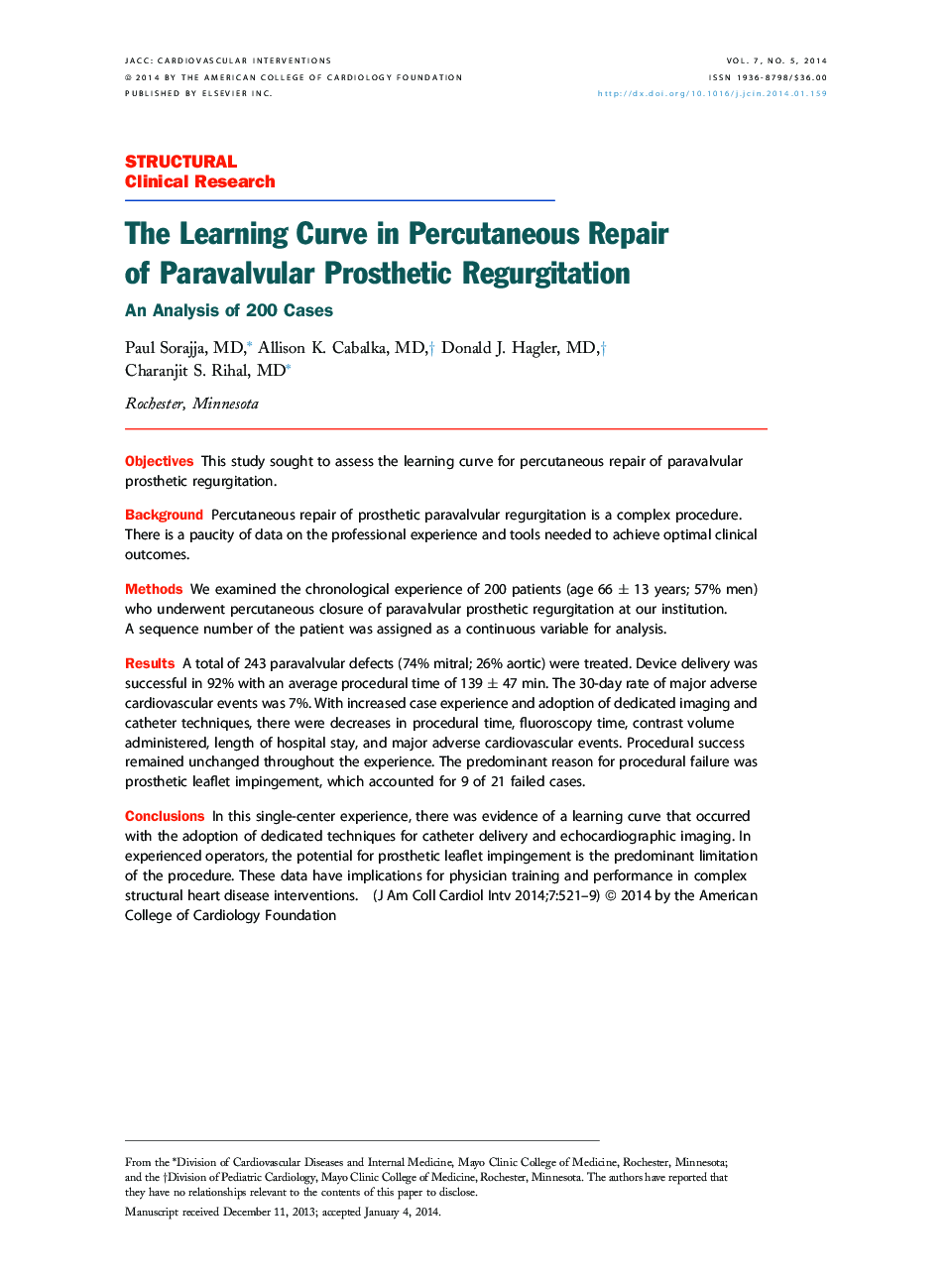| Article ID | Journal | Published Year | Pages | File Type |
|---|---|---|---|---|
| 5981364 | JACC: Cardiovascular Interventions | 2014 | 9 Pages |
ObjectivesThis study sought to assess the learning curve for percutaneous repair of paravalvular prosthetic regurgitation.BackgroundPercutaneous repair of prosthetic paravalvular regurgitation is a complex procedure. There is a paucity of data on the professional experience and tools needed to achieve optimal clinical outcomes.MethodsWe examined the chronological experience of 200 patients (age 66 ± 13 years; 57% men) who underwent percutaneous closure of paravalvular prosthetic regurgitation at our institution. A sequence number of the patient was assigned as a continuous variable for analysis.ResultsA total of 243 paravalvular defects (74% mitral; 26% aortic) were treated. Device delivery was successful in 92% with an average procedural time of 139 ± 47 min. The 30-day rate of major adverse cardiovascular events was 7%. With increased case experience and adoption of dedicated imaging and catheter techniques, there were decreases in procedural time, fluoroscopy time, contrast volume administered, length of hospital stay, and major adverse cardiovascular events. Procedural success remained unchanged throughout the experience. The predominant reason for procedural failure was prosthetic leaflet impingement, which accounted for 9 of 21 failed cases.ConclusionsIn this single-center experience, there was evidence of a learning curve that occurred with the adoption of dedicated techniques for catheter delivery and echocardiographic imaging. In experienced operators, the potential for prosthetic leaflet impingement is the predominant limitation of the procedure. These data have implications for physician training and performance in complex structural heart disease interventions.
